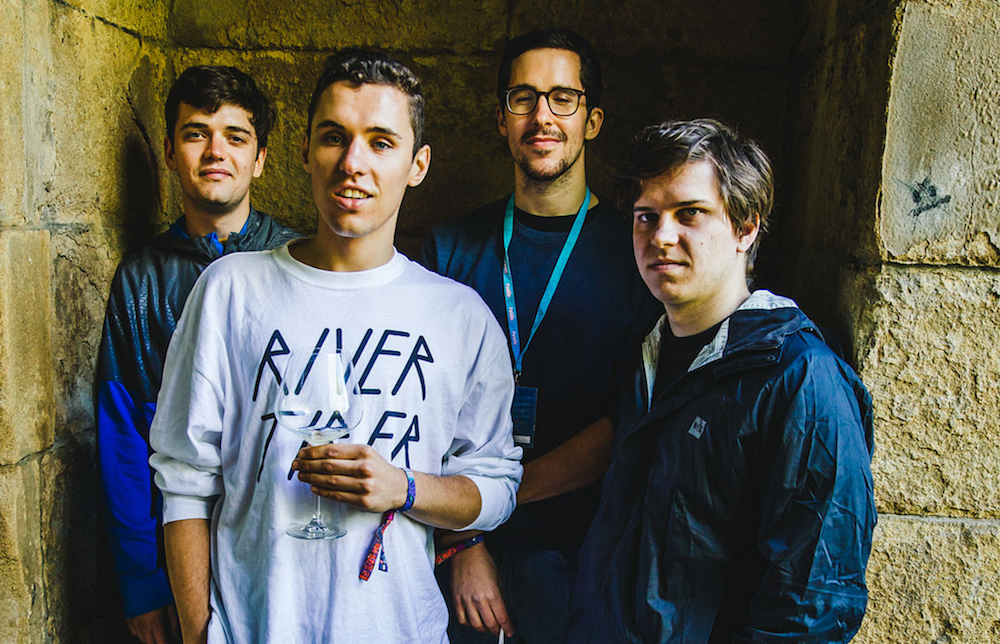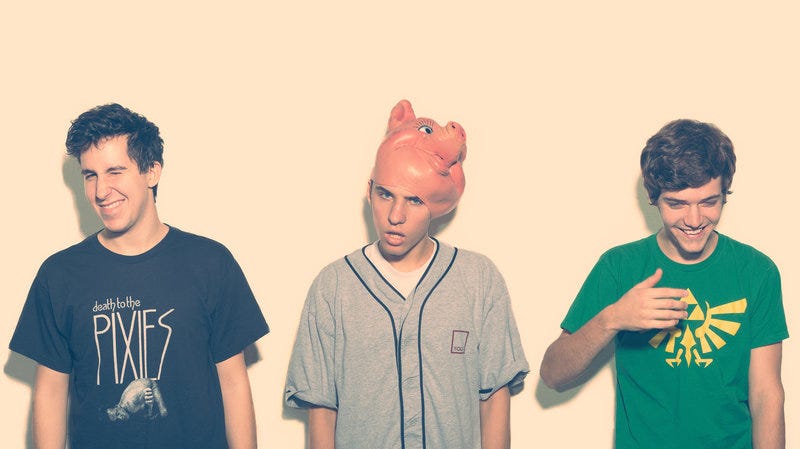BADBADNOTGOOD IS KEEPING JAZZ ALIVE
Featured photo: Robert Alleyne)
Jazz is the definite precursor to Hip-Hop’s birth. There is no other objective retort against the fact. Before young, husky lyricists found a way for their creative flow to make them a living, young street players of the major metropolitans transferred their instrumental capabilities to make it to the Apollo Theater.
That type of renegade energy is instilled in the more erudite creative types. If you want to pursue your passion, facing against thousands or even millions of other pursuits, you would have to become a greater monomaniac than the others.
Skilled musicians understand this, and now have to embed the entrepreneurial code into their pathway towards getting discovered, either by labels or by a supportive audience

BadBadNotGood understands this wholly and without discordance. Utilizing a genre previously admitted to being fading away will not only have to take a unique marketing strategy, but the creative flow has to be in accordance with the modern sound. Assembling in Humber College’s Jazz program, the group initially consisted of keyboardist Matthew Tavares, bass guitarist Chester Hansen, and drummer Alexander Sowinski.
In 2011, BadBadNotGood released their first project, self-entitled BBNG. The project mostly consisted of Jazz revisions of well known musical works, typically from the realms of Hip-Hop, Neo-Soul, and even video game soundtracks. In 2012, BBNG2 was released with a little of the same formula. Although, the group began to ingrain some of their own original impulses in the project.
It wasn’t until 2014’s III that BadBadNotGood unleashed their own material, justified in their own pattern and creativity. Year after year, each of those EP’s incremented more attention from the internet. Just from their first project alone, their public image has been augmented by the attention of Tyler, The Creator, and his fellow Odd Future affiliates.
They’ve even composed a musical session together back in 2011.
The video garnered the attention from both Jazzheads and counter-cultured Hip-Hop fanatics alike. As Odd Future’s subcultural domination exasperated throughout 2011, 2012, and 2013, so has BadBadNotGood’s public prestige. They’ve even managed to be one of Frank Ocean’s background players at Coachella’s 2012 festival.
Slowly but surely, their concentrated compositions and explosive showcases have set them off the grid, penetrating through being labeled as only a Jazz band. BadBadNotGood now manages to headline in festivals such as Tropicalia Fest in Long Beach and Dour Festival in Dour, Belgium.
The trio soon became a quartet by adding saxophonist Leland Whitty to their group. Whitty’s introduction within the group was introduced in their album IV, released in Summer of 2016.
At that point, BadBadNotGood held a collaborative resume with the likes of Montreal producer Kaytranada, quirky and elusive rapper MF Doom, Odd Future affiliate Earl Sweatshirt, and even held an album with Wu-Tang Clan’s mean, slick lyricist, Ghostface Killah.
Along with their mainly Jazz-oriented projects and releases, they’ve been able to implement their hands into the alternative sounds of Hip-Hop.

BadBadNotGood is, regardless, unable to categorize standardly. When they collaborated with Chicago rapper Mick Jenkins on the song Drowning, they’ve focused on pulsating bass, eerie chords, and inimical keys that appear and disappear in the background.
When collaborating with Kaytranada on the song Weight Off, they’ve absorbed Kaytranada’s spicy chords and slushed it with Hansen’s rhymic guitar chords and Sowinski’s potentially charged drumming pattern.
When it comes to their personal works, they’ve managed to make use of both their collaborative power and their own personalities, especially in projects such as III and IV. In their album IV, all four members made sure that their hands were articulated equally and seen transparently in each of their compositions.

In the song Chompy’s Paradise, I could hear Tavares’ prolonged chords, Sowinski’s spilling drumming, Whitney’s effervescent saxophone lines, and Hansen’s whispering bass guitar. Each of them utilizes their instruments by notching them in different paths and inspirations.
As Chompy’s Paradise is a melodic and seething piece, the composition track IV is a peddling, noir-influenced track that revamps the energy previously surged earlier in the album. As IV tends towards its sped-fast sound play, Structure №3 slows down the pace again but instead gives more attention to Tavares’ glistening chords that lead the composition into the unventured territory.
That tends to be how much of their work comprises, which is why they gain the recognition they’ve enjoyed for the past couple of years. The group can set the mood from soothing and nocturnal to dark and revolting from one piece to the next. Considering their catalog of music over the years, as well as their immense list of collaborations, it still doesn’t seem that they will be slowing down anytime soon.
Considering they’re still young and well into their 20’s, the band members still have so much time to take advantage of. Most importantly, it’s groups like BadBadNotGood that made sure that Jazz has not yet died, and is fully capable of assimilating into the new era.
Only groups with immense talent and monomaniac momentum could achieve something to that high of a degree and is not the only thing that they will be pursuing in the future.









